Kazakhstan Travel Guide
Destination famous with it's cozy cities and amazing landscapes. Just travel into the countryside and you will find tulips stretching across the steppe and clear blue lakes in the mountains; go in winter and you can hunt with golden eagles.
The world’s ninth-biggest country is the most economically advanced of the ’stans’, thanks to its abundant reserves of oil and most other valuable minerals. This means generally better standards of accommodation, restaurants and transport than elsewhere in Central Asia. The capital Astana, on the windswept northern steppe, has been transformed into a 21st-century showpiece with a profusion of bold futuristic architecture. But it’s beyond the cities that you’ll find the greatest travel adventures, whether hiking in the high mountains and green valleys of the Tian Shan, searching for wildlife on the lake-dotted steppe, enjoying homespun hospitality in village guesthouses, or jolting across the western deserts to remote underground mosques.
Don't forget to try local delicacies: beshbarmak, kumiz and local chocolate.
Fast navigation
Destination Highlights
Almaty
Almaty is Kazakhstan’s main transport hub and a place many travellers pass through. Stay a few days and you’ll find that it is a sophisticated place – one for enjoying green parks and excellent museums, shops and markets, and for eating, drinking and partying in Central Asia’s best selection of restaurants, cafes, bars and clubs. Great mountain hiking and skiing are right on the doorstep.
The city is located in the mountainous area of southern Kazakhstan near the border with Kyrgyzstan in the foothills of the Trans-Ili Alatau at an elevation of 700–900 m, where the Large and Small Almatinka rivers run into the plain.
Central State Museum
Almaty’s best museum takes you through Kazakhstan’s history from Bronze Age burials and nomadic culture to WWII sacrifices, with many beautiful artefacts on display. A large replica of the Golden Man, a 3rd- or 4th-century Saka warrior whose gold-clad remains were uncovered in 1969, stands in the entrance hall.
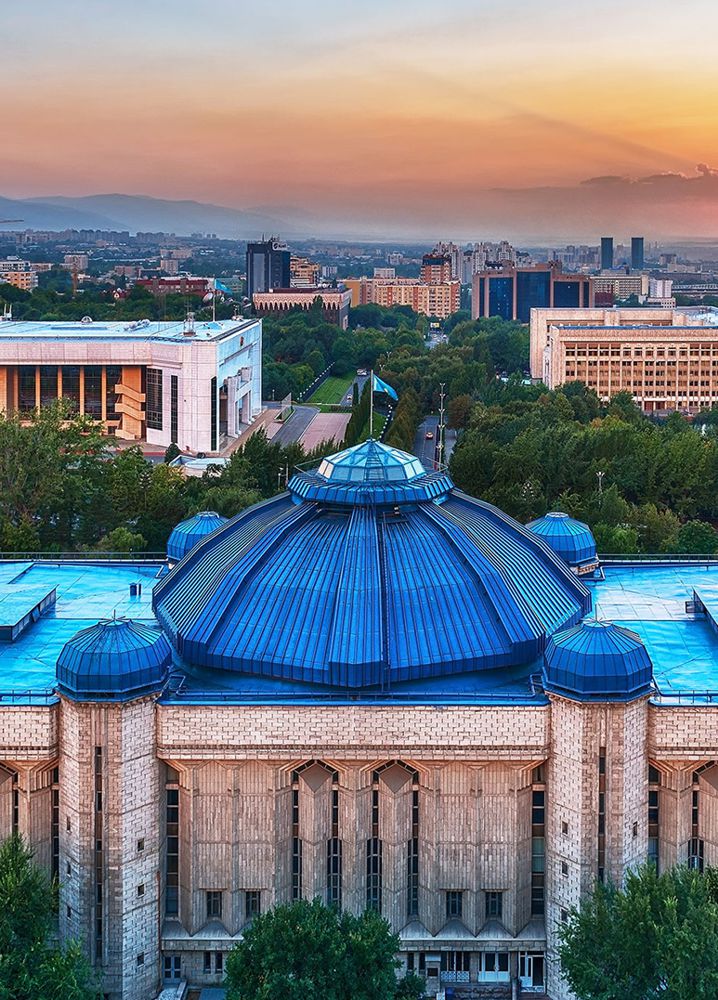
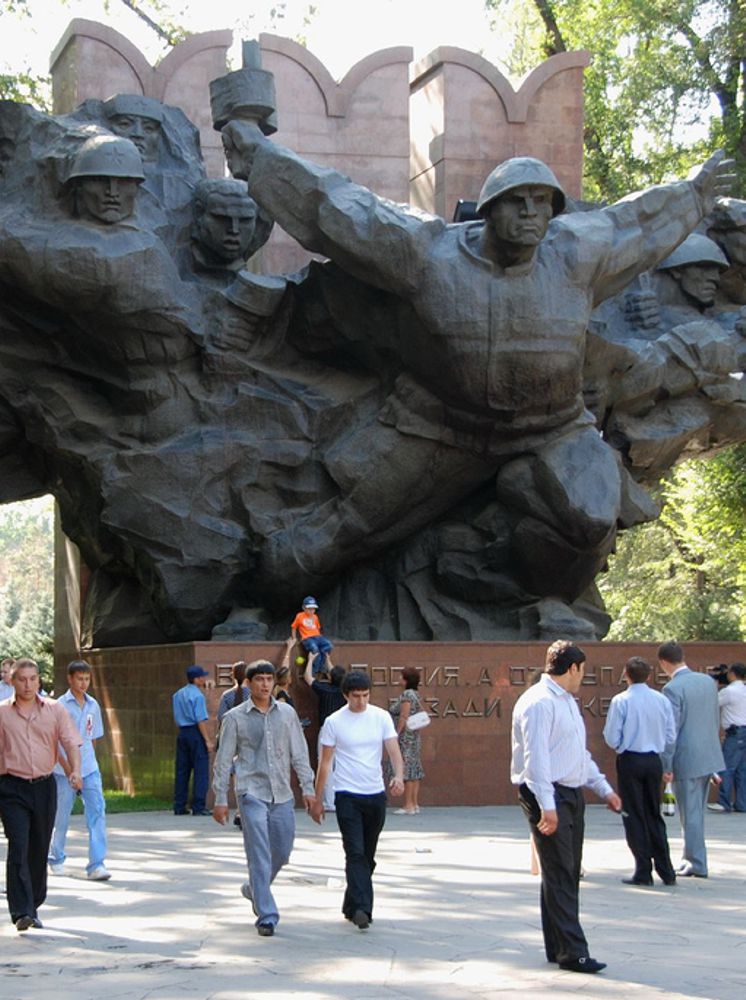
Panfilov Park
The park is named for the Panfilov Heroes, 28 soldiers of an Almaty infantry unit who died fighting off Nazi tanks in a village outside Moscow in 1941.
Kazakh Museum of
Folk Musical Instruments
In a striking 1908 wooden building (designed by cathedral architect Zhenkov), the city’s most original museum is a must for musicians. As well as a fine collection of traditional Kazakh instruments (wooden harps and horns, bagpipes, the lute-like two-stringed dombra and the viola-like kobyz), there are also Turkish, Uzbek and Kyrgyz folk instruments for comparison and it’s possible to attend the occasional performance of traditional music.
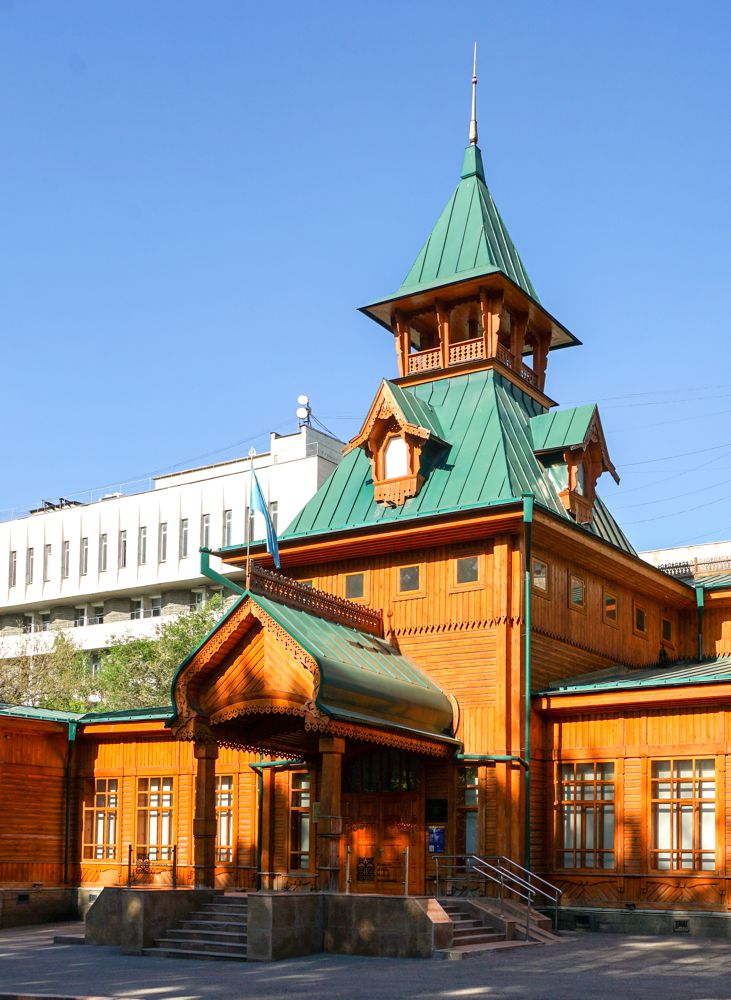
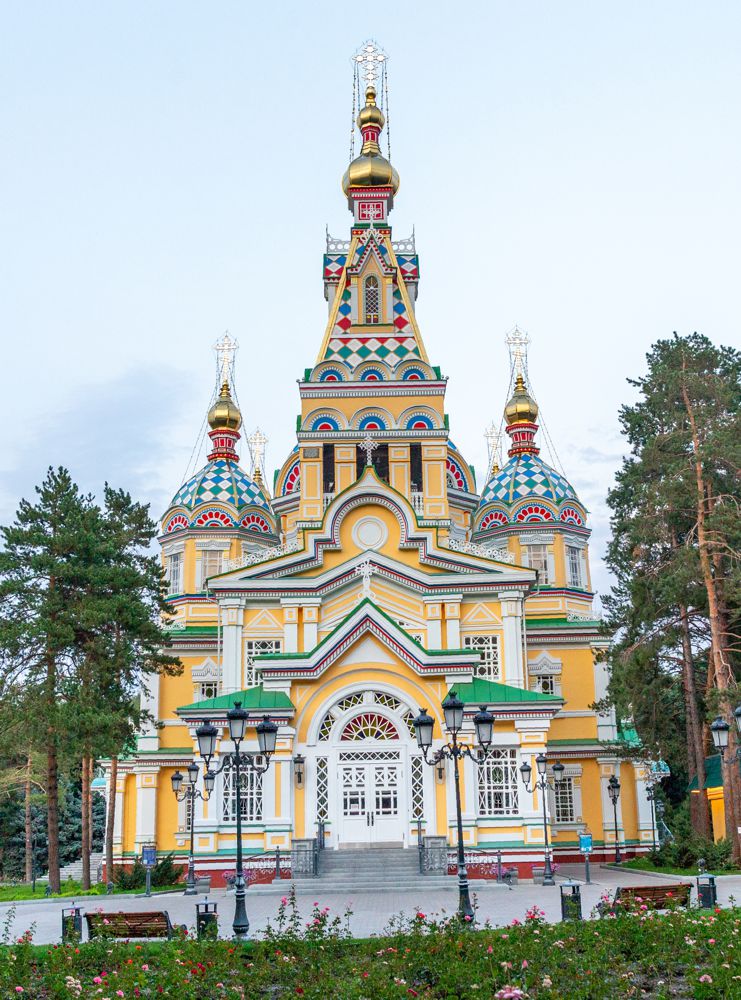
Zhenkov Cathedral
Kazakhstan’s nearest relative to St. Basil’s Cathedral in Moscow and one of Almaty’s few surviving tsarist-era buildings. Designed by A.P. Zhenkov in 1904, used as a museum and concert hall in Soviet times, it was returned to the Russian Orthodox Church in 1995.
Reserve-Museum of Issyk
State Historical Cultural Reserve-Museum of Issyk provide you expositions dedicated to the history and culture of the Saka period, including a first copy of Golden Man and golden items, ancient ceramics, weapon, elements of horse equipment, as well as the model of Saka burial mound. Territory of museum also includes its open-air exposition: Saka period Kurgans, place of finding of Golden Man, Saka period settlement Orikti, Saka period settlement Rakhat, and medieval settlement Talkhiz (Talgar).
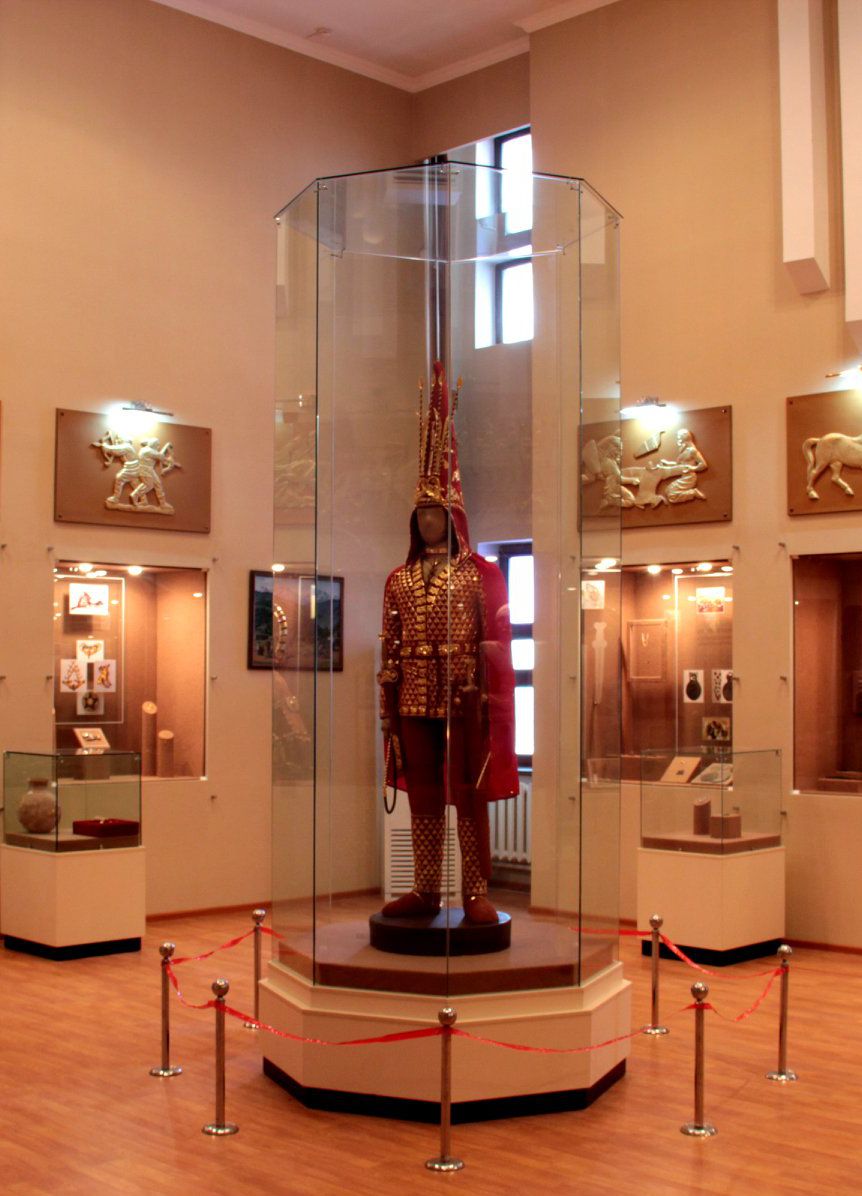
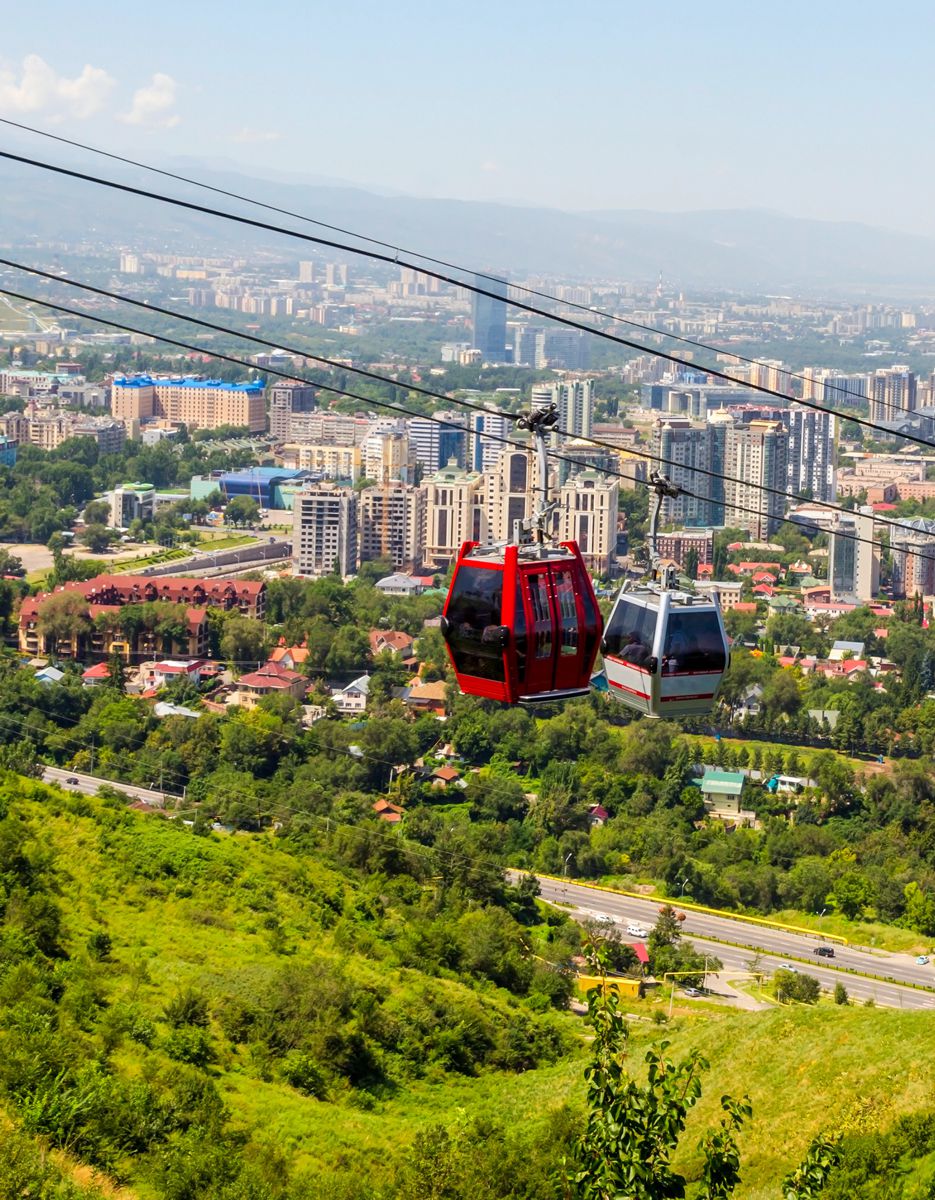
Kok-Tobe Hill
This 1100m hill on the city’s southeast edge is crowned by a 372m-high TV tower visible from far and wide, and affords great views over the city and the mountains, plus an assortment of attractions at the top. The easy way up is by the smooth cable car. Here, you will find best view to Almaty city from the observation desk. Do not miss also nice park walk with Mini Zoo and Beatles band corner.
Medeo & Chimbulak
Medeo and Chimbulak are Almaty’s winter sports playgrounds in the Malaya Almatinka valley. Medeo, about 15km southeast of central Almaty at an altitude of 1700m, is a scattering of buildings around the huge Medeo ice rink. Chimbulak, further up the valley at 2200m, is Central Asia’s top skiing center. The two are connected by road and a cable car. Medeo is always several degrees cooler than Almaty, and Chimbulak is cooler still. Except in summer, rain in Almaty means snow and zero visibility at the higher elevations.
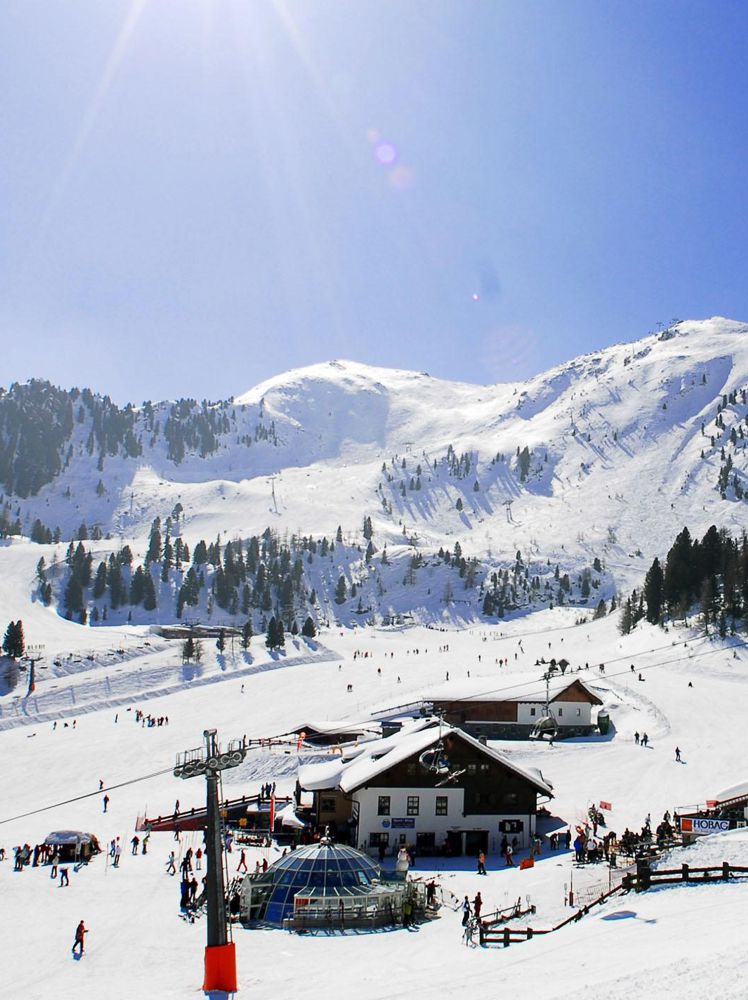
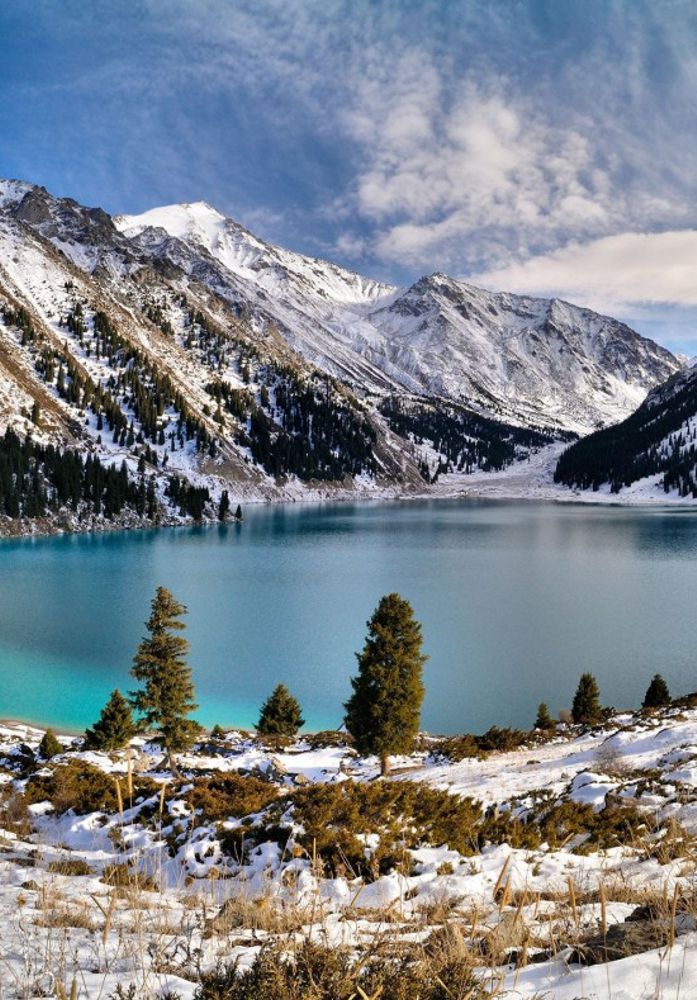
Big Almaty Lake
This picturesque turquoise lake, 1.6km long, rests in a rocky bowl at 2500m altitude, reflecting the Tian Shan mountains and the giant fir trees in its still depths. During your visit please note, border guards are present around the lake and climbing on the dam or swimming is forbidden.
Chocolate factory
The Rakhat Chocolate factory and their Brand Shop are located along the Zhenkova street, close to Green Bazaar, you can reach the golden gates of Rakhat just by smelling the aromatic sweetness in the air. Rakhat which means pleasure in Kazakh is the oldest manufactures of chocolates dating back to almost 70 years.
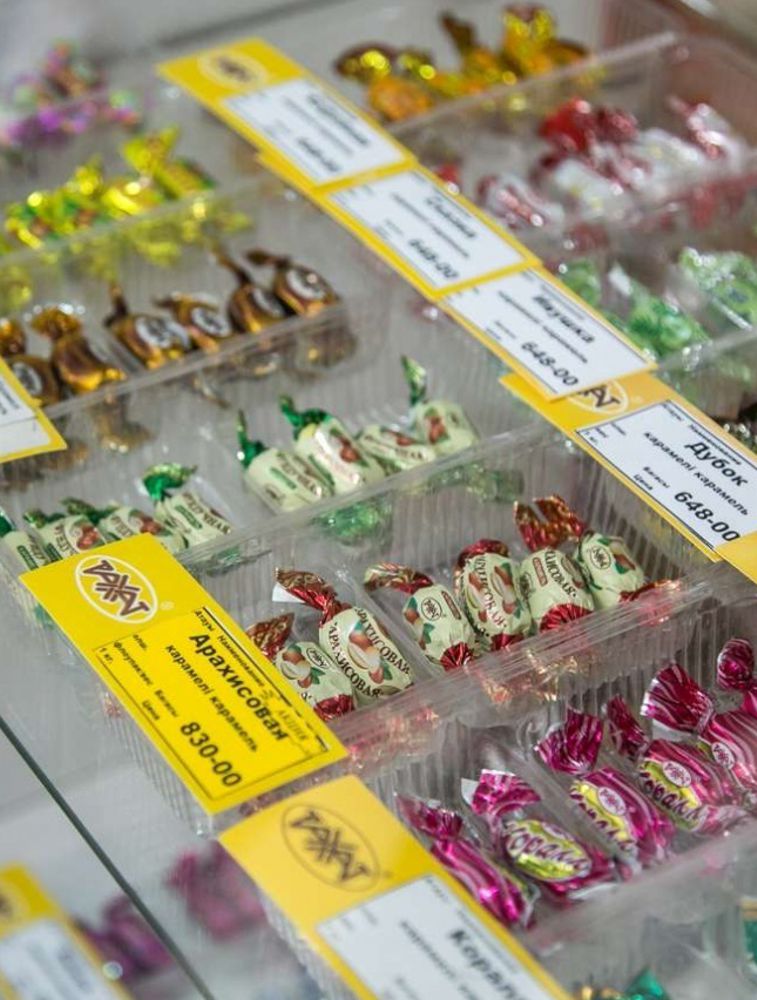

Green Bazaar
Green Bazaar, next Almaty landmark, has a true flavor of Central Asia and is worth putting on your itinerary even if you’re not really food shopping. There’s an entire row dedicated to horse meat.
Nur-Sultan
Nur-Sultan, known between 1998 and 2019 as Astana, is the capital city of Kazakhstan. In March 2019, it was renamed Nur-Sultan in honor of the departing Kazakh president, Nursultan Nazarbayev.
It stands on the banks of the Ishim River in the northern part of Kazakhstan. Its skyline grows more fantastical by the year as landmark buildings, many of them by leading international architects, sprout along the wide boulevards in a variety of Asian, Western, Soviet and wacky futuristic styles. Several spectacular structures are open to visitors and it’s hard not be impressed by the very concept of this ‘Singapore of the steppe’.
In 2017 Nur-Sultan (Astana) hosted Expo 2017: “Future Energy”, with heads of state from 17 different nations in attendance. It is the first world’s fair to be held in Central Asia and its central pavilion, Nur Alem, is the largest spherical building in the world.
Nurzhol Boulevard
Nurzhol Boulevard is the national boulevard, a pedestrian area in the new business and administrative centre of Nur-Sultan, on the left bank of Ishim river. Both Nurzhol Boulevard and the layout of the city were designed by renowned architect Kisho Kurokawa. The boulevard runs from the President's residence Ak Orda to the marquee shaped Khan Shatyr Entertainment Center. Along the boulevard there is a row of buildings designed by well-known domestic and foreign architects. Behind the Ak Orda, located city's biggest attractions: the Palace of Peace and Reconciliation, National Museum of the Republic of Kazakhstan, and Palace of Independence, worth a visit for its huge scale model of how Astana is planned to look in 2030.
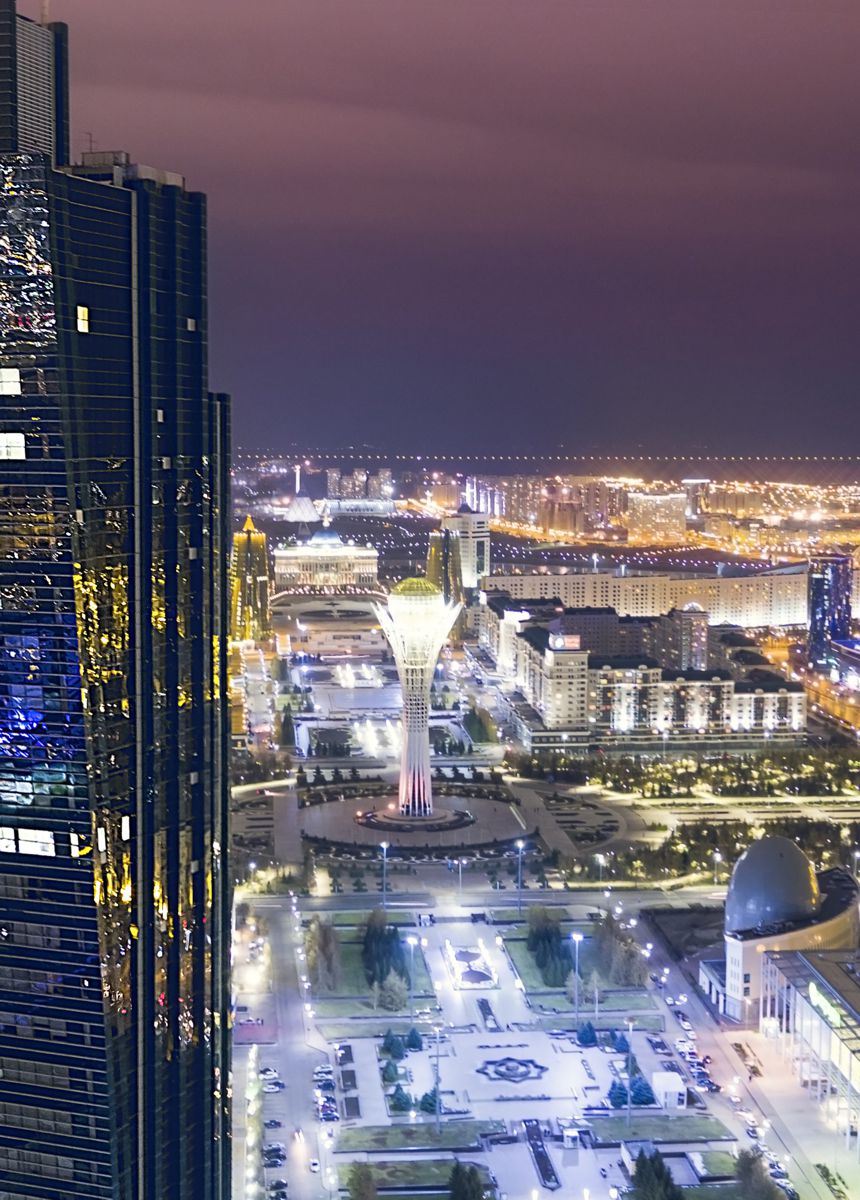
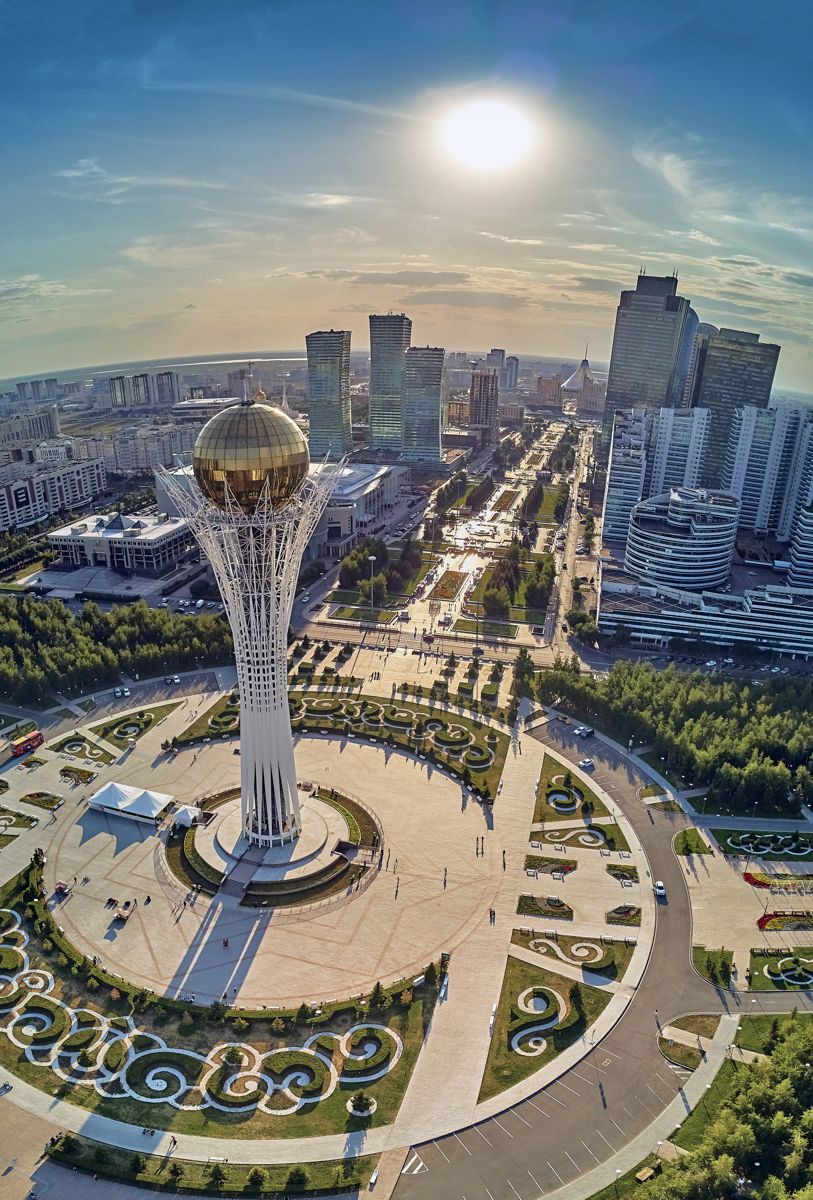
Bayterek Monument
Nurzhol bulvar’s centrepiece is this 97m-high monument, a white latticed tower crowned by a large glass orb. This embodies a Kazakh legend in which the mythical bird Samruk lays a golden egg containing the secrets of human desires and happiness in a tall poplar tree, beyond human reach. Lifts glide visitors up inside the egg, where you can ponder the symbolism and enjoy expansive views.
The National Museum
The National Museum of the Republic of Kazakhstan is the biggest museum in Central Asia (opened on July 2, 2014), it covers the history and culture of Kazakhstan from ancient to modern times. Themed halls comprise interactive displays and artifact exhibits, ranging from a yurt in the Hall of Ethnography to a chronicle of the capital’s modern history in the Hall of Astana. Exhibit space occupies 14 rooms with a total area of over 14,000 sq.m, separated by collections displayed in Hall of Astana, Hall of Independent Kazakhstan, Hall of Gold, Hall of Ancient and Medieval History, the Hall of History, Ethnography Hall, Halls of Modern Art.
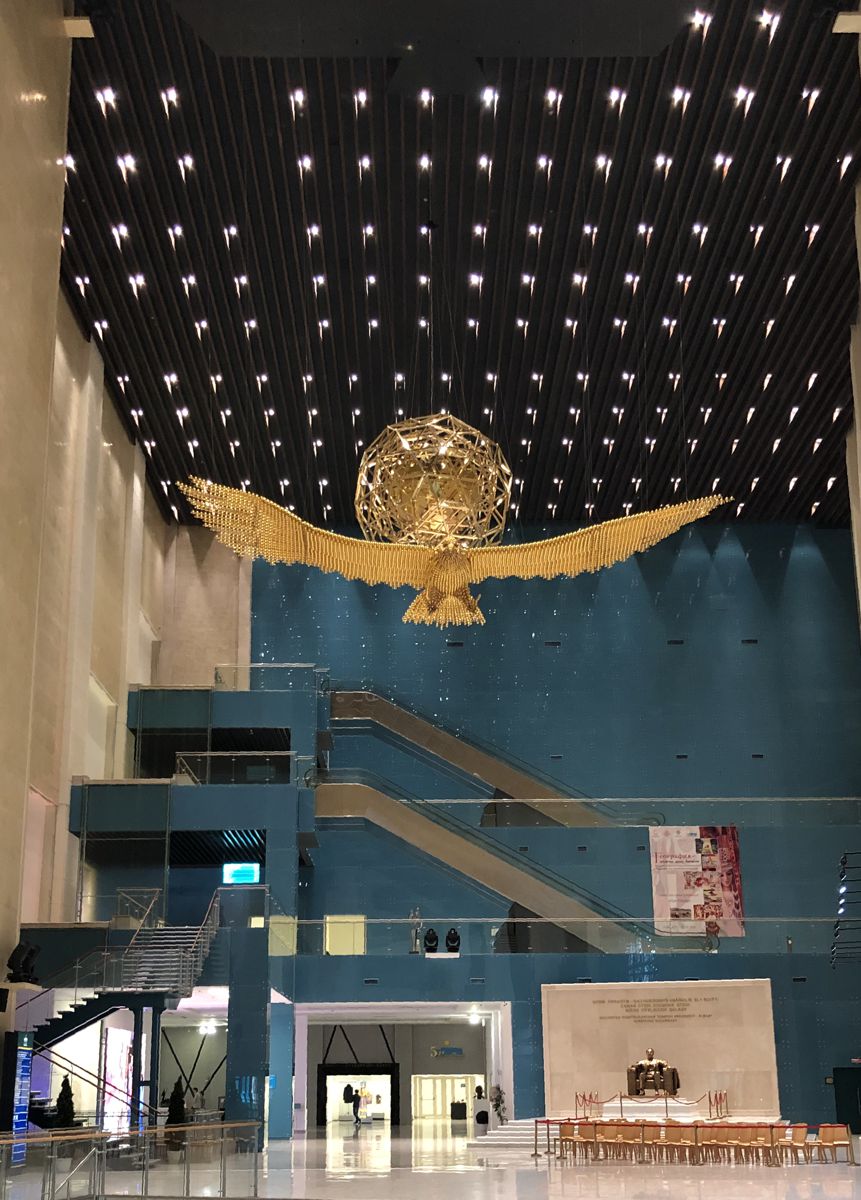
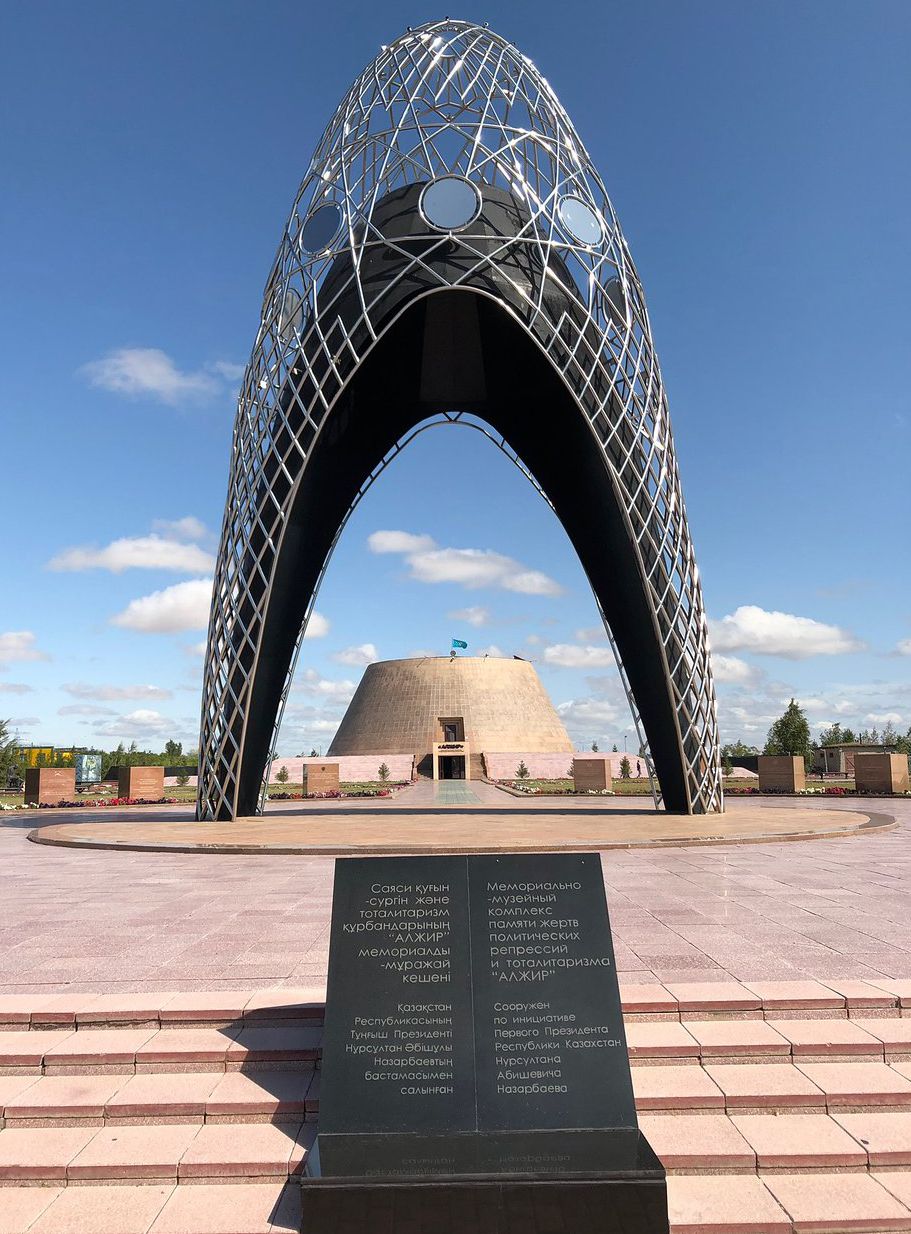
"ALZHIR" Labour Camp
During the Stalin era, the locality of Akmol vilage, within 35 km from Nur-Sultan, became notorious for the presence of a labor camp for "wives and children of men who were interned elsewhere as 'betrayers of the motherland'" (Akmol Labour Camp for Wives of Traitors of the Motherland, abbreviated in Russian as ALZhIR). The Museum of the Victims of Repression in Akmol opened on 31 May 2007, it documents the events, and an arched monument commemorates the Great Patriotic War. An alleyway behind the museum displays the names of locals who fell in the war.
Lake Burabay
Lake Burabay (formerly Borovoe), 240 km north of Astana, is the focus of Burabay National Nature Park, a picturesque 835 km2 area of lakes, hills, pine forests and strange rock formations that has given birth to several Kazakh legends. The small town of Burabay stretches about 2.5 km along the lake’s northeast shore. On the main road here, the park’s Visitor Centre & Nature Museum contains a diverse display of stuffed wildlife from Kazakhstan’s national parks. A well-made walking path parallels the road for 9 km from the lake’s southeast to northwest corners via Burabay town. Heading west from the town it’s 4 km to picturesque Blue Bay.
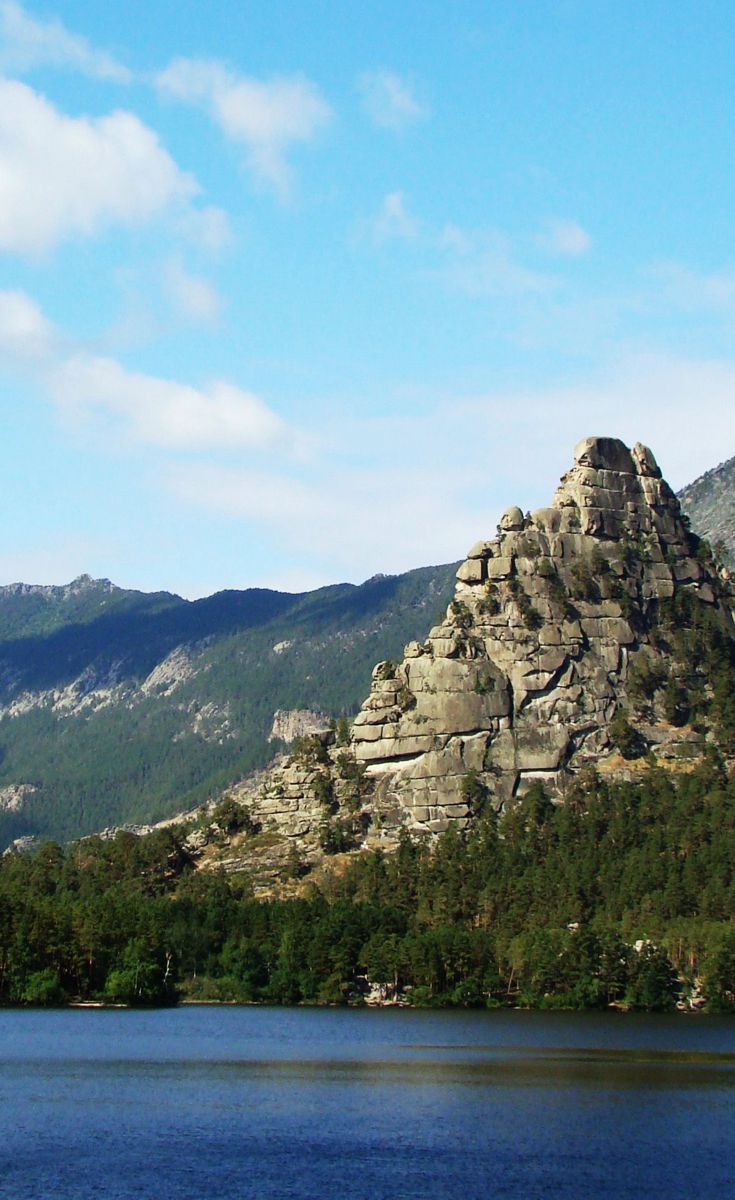
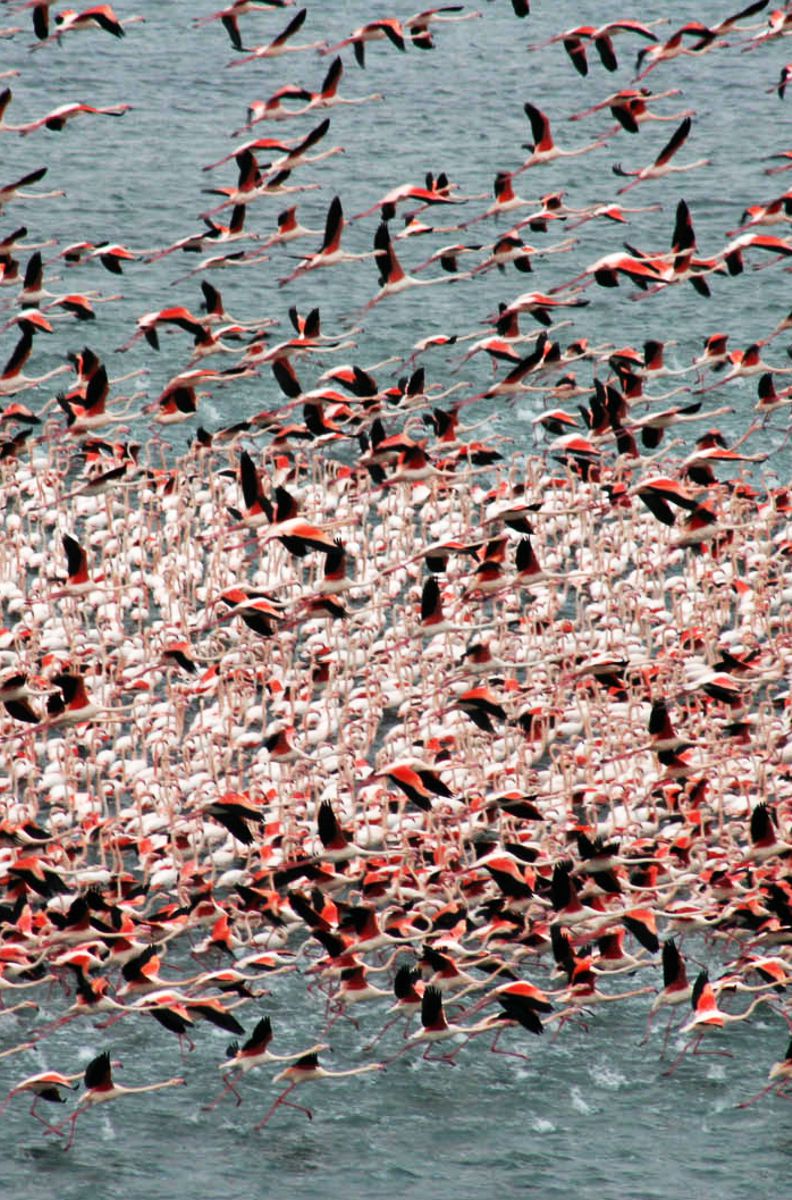
Korgalzhyn
Nature Reserve
Korgalzhyn State Nature Reserve is a nature reserve in Aqmola and Karaganda regions of Kazakhstan, located west of the city of Astana. It is part of the UNESCO heritage site Saryarka — Steppe and Lakes of Northern Kazakhstan, Ramsar site and biosphere reserve. It protects about 5432 km2 of lakes, steppes and semi deserts. The biggest lake is Lake Tengiz. Extensive reserve waters provide the necessary living space in the largest Asian population of local and migrating wetland birds, following by Siberian-East African migration route.
Southern Kazakhstan
This is the most Kazakh part of Kazakhstan and most famous region of Kazakhstan that was within the sphere of the Silk Road and the settled civilisations of Transoxiana in medieval times.
Chief among its varied attractions are the pristine mountain country of Aksu-Zhabagly and the splendid Islamic architecture of the Yasaui Mausoleum at Turkestan, Kazakhstan’s most sacred Muslim shrine and a fine piece of Timurid architecture.
For those arriving in Shymkent from the relative wilderness of Aral and Kyzylorda, the city’s excellent dining scene is a feast for the starving.
Otrar Settlement
Otrar ancient settlement laying on Syrdarya corridor of Silk Road, that once connected Black Sea with Chach (Tashkent), this oasis city had important regional presence in trading and crafts producing. Otrar oasis is an area of 200 sq km with archaeological remains of medieval towns and structures of irrigation. The main town is Otrar (I-XV1D AC), other towns are Kuyruk-Tobe (I-XV), Altyn - Tobe(I-XI), Pshakshi-Tobe (I-XII), Mardan-Kuyk (I-XV), Kok-Mardan (I-VII). Otrar town is the largest medieval hillfort of Kazakhstan with an area of 170 ha.: in the first century AC was part of the Kangju Empire; at the beginning of the VIII capital of the Kangars tribal confederation (Petchenegues) with the name of Kangu-Targan and later of Farab. Abn Nasr Farabi, an outstanding encyclopedic scientist, born here in 870 and Timur here died in 1405.
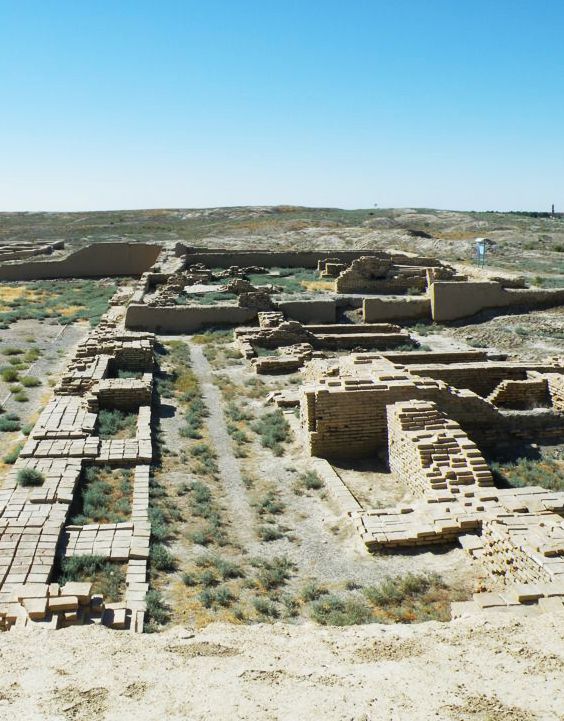
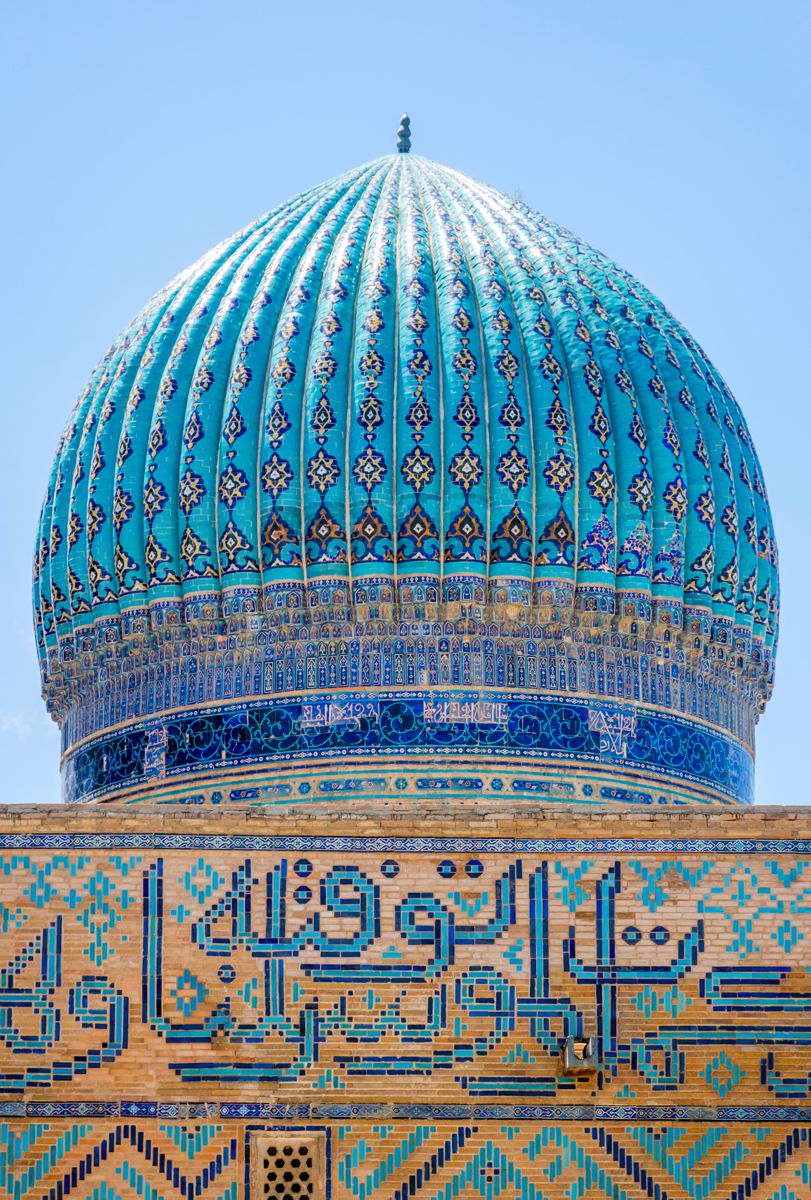
Mausoleum of
Khoja Ahmed Yasawi
At Turkestan, 165km northwest of Shymkent, stands Kazakhstan’s greatest architectural monument and most important pilgrimage site. The mausoleum of the first great Turkic Muslim holy man, Khoja Ahmed Yasawi, was built by Timur in the late 14th century on a grand scale comparable with his magnificent creations in Samarkand, and has no rivals in Kazakhstan for man-made beauty. Yasawi was born at Sayram, probably in 1103, underwent ascetic Sufi training in Bukhara, then lived much of the rest of his life in Turkestan, dying here about 1166.
Sauran Settlement
Sauran is an ancient city located 43 kilometres north-west of the city of Turkistan. One of the earliest mentions of the city comes from the Arab geographer Al-Muqaddasi, who described it in the 10th century as "a large city surrounded by seven walls, mosque located in the inner city." In 1065, the city submitted to the Seljuq dynasty, which was part of the transformation of the Kara-Khanid Khanate into a vassal of the Seljuqs. Around the 1370s, when the region was under the control of Urus Khan, Tokhtamysh of the blue horde, heavily supported by Amir Timur, tried to conquer the region, aiming to rule the cities of Sauran, Otrar, Saganak, Sairam, Serai, and others. By the 15th century, the city had established diplomatic relations with the Ming dynasty, which recorded the name of the city in the Ming Shilu as 掃蘭 (saolan). The poet Zayn al-Din Mahmud Vasifi visited the city from 1514–1515, and described the city's karez water infrastructure.
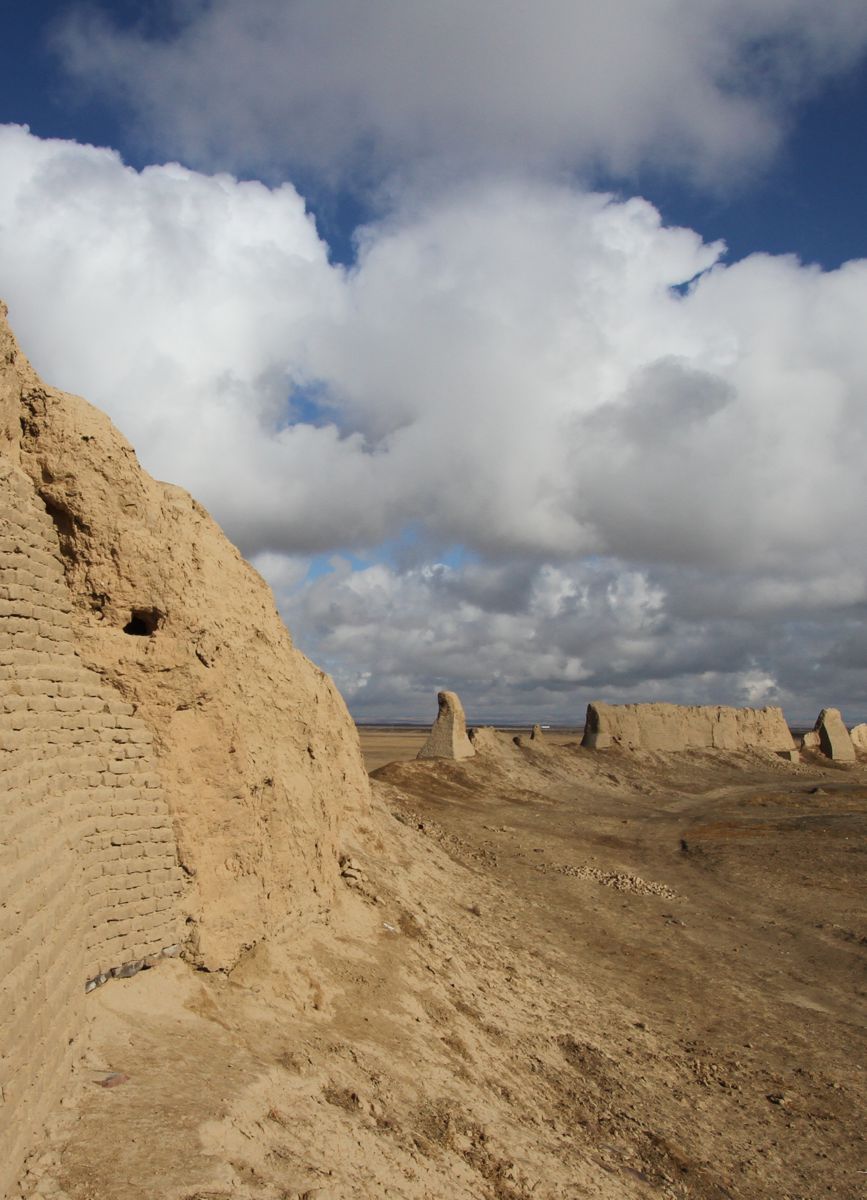
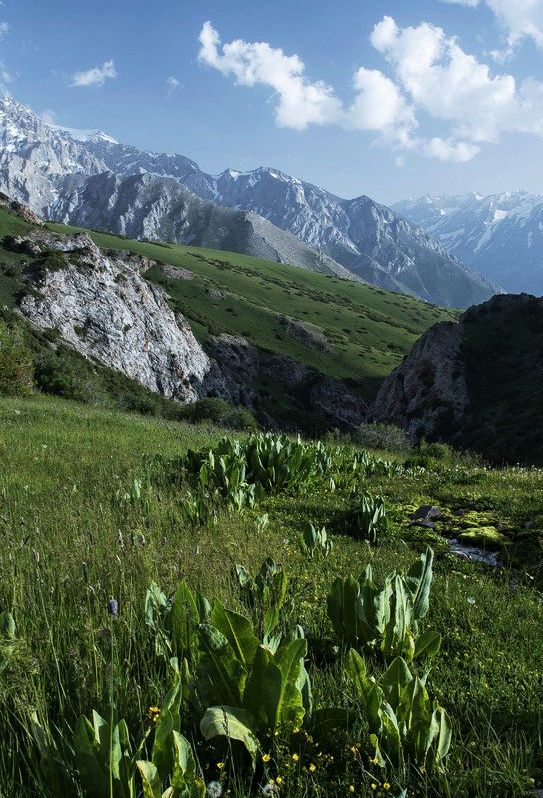
Sayram Ugam
National Park
This mountainous park abutting the Uzbek border immediately southwest of the Aksu-Zhabagyly reserve is less well known than its neighbor, but offers similar attractions and is generally cheaper to visit. A travel programs provides homestays in the villages of Kaskasu, Dikankol and Tonkeris, in beautiful foothill country where grass-lands meet wooded foothills, and in the main access town Lenger. Good outings include horse or 4WD trips to the western end of the spectacular Aksu Canyon from Tonkeris, foot or horse daytrips into Kaskasu Canyon from pretty Kaskasu village, and the highlight two-to-three-day camping trip by foot or horse to beautiful Susingen Lake from Kaskasu or Dikankol.
Southeast Kazakhstan
The most beautiful region from Almaty to Lake Balkhash is known as Zhetisu (Semirechie), meaning Land of Seven Rivers. There are actually more than 800 rivers, many fed by glaciers in the mountains along the Kyrgyz and Chinese borders.
It’s also known as the ‘Golden Triangle’ for its trio of major natural attractions: Kolsai Lakes, Charyn Canyon and Altyn-Emel National Park. This is one of Kazakhstan’s most varied regions: landscapes vary from Utah-like rock formations and arid moonscapes to lush greenery, waterfalls, lakes fed by glacial melt-water and dense forest.
Charyn Canyon
Sculpted by the wind, water and sun over millions of years, and some 300 m deep in places, Charyn Canyon is Kazakhstan’s answer to the Grand Canyon, with some truly spectacular and varied landscapes. There are the red rock formations of the Valley of Castles (the canyon’s most popular destination), the canyon’s most popular destination – reminiscent of Utah or Arizona, with a dirt road snaking down to the fast-flowing, glacial Charyn River.
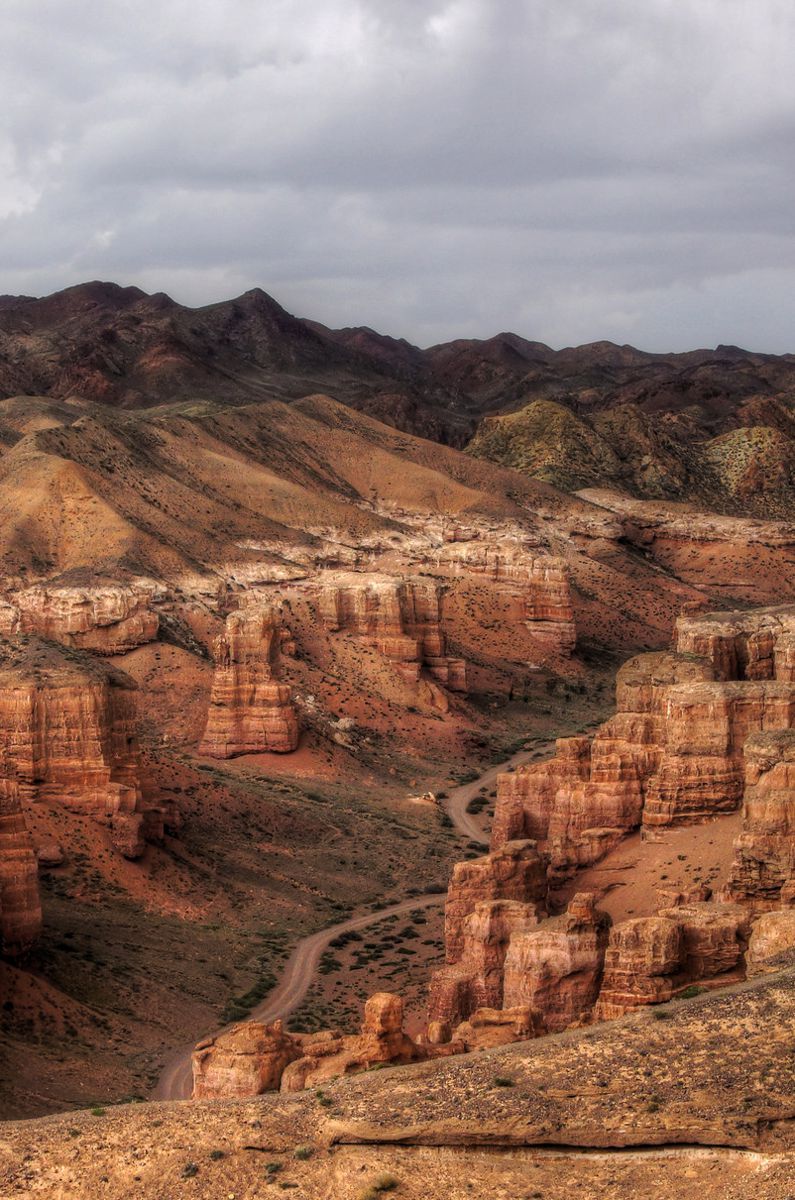
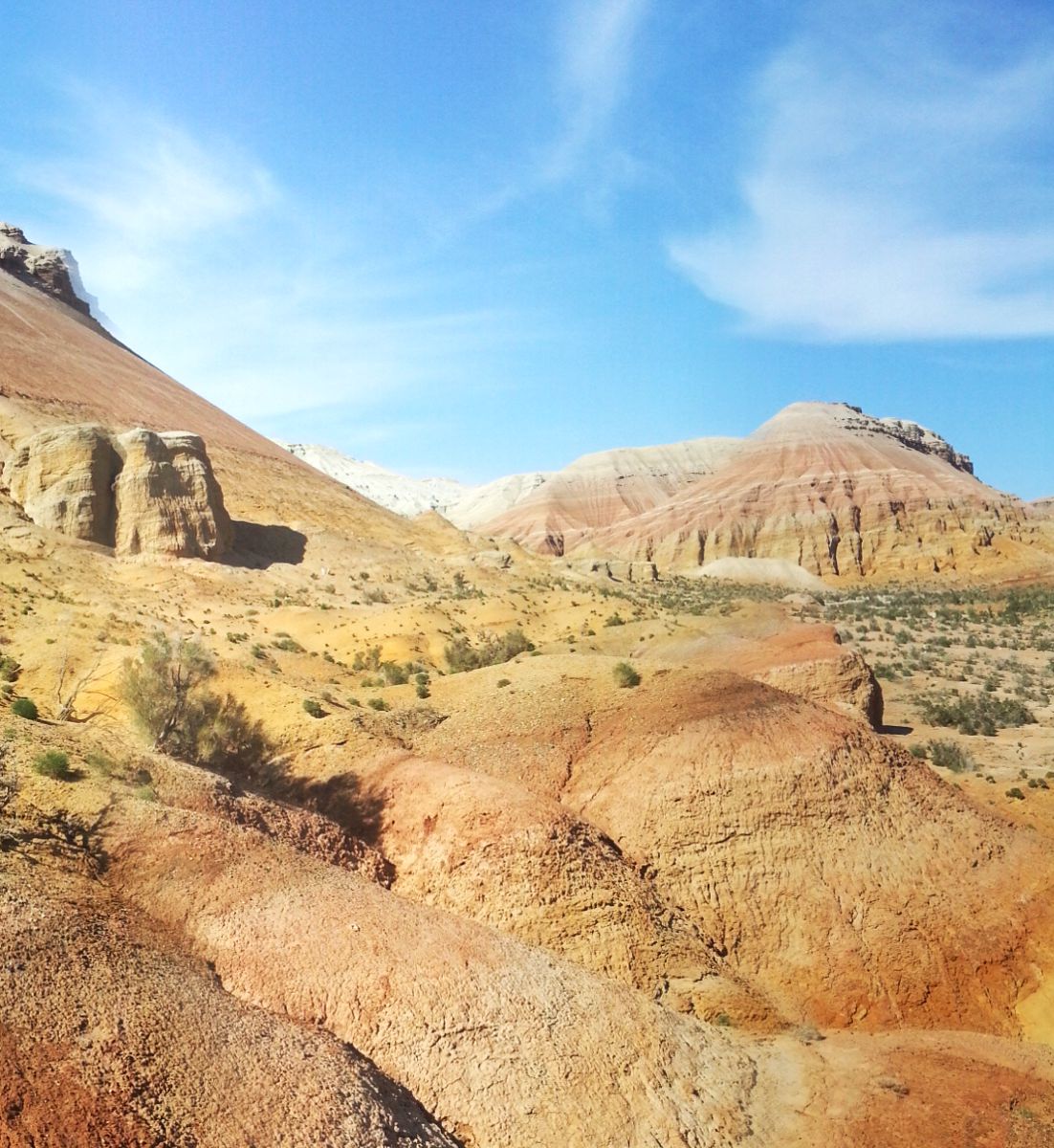
Altyn-Emel
National Park
The 4600 km2 Altyn-Emel National Park is worth visiting if you like beautiful desolation and unusual natural and archaeological attractions. Apart from the striking landscapes, such as the white, red and ochre of the fossil-rich Kakutau mountains, the park is famous for the Singing Dune, which hums like an aircraft engine when the weather is suitably windy and dry. Archaeology fans will be absorbed by the Terekty Petroglyphs and the 31 Besshatyr burial mounds – one of the biggest groups of Scythian tombs known anywhere.
Lake Kaindy
Kaindy gorge, called after a small spring river that runs through in the depth, is located in the east of the village Saty (Kolsai National Park). If you drive along the gorge for 15 km, you will get to the lake Kaindy. This unique basin (length is 400m) lies at a height of about 1800m above sea level, in the zone of dense spruce forest. The lake was formed in 1911 after a huge earthquake that resulted in a big landslide from the eastern slope. The rock slide “place of origin” can still be seen today, because it has not been overgrown yet.
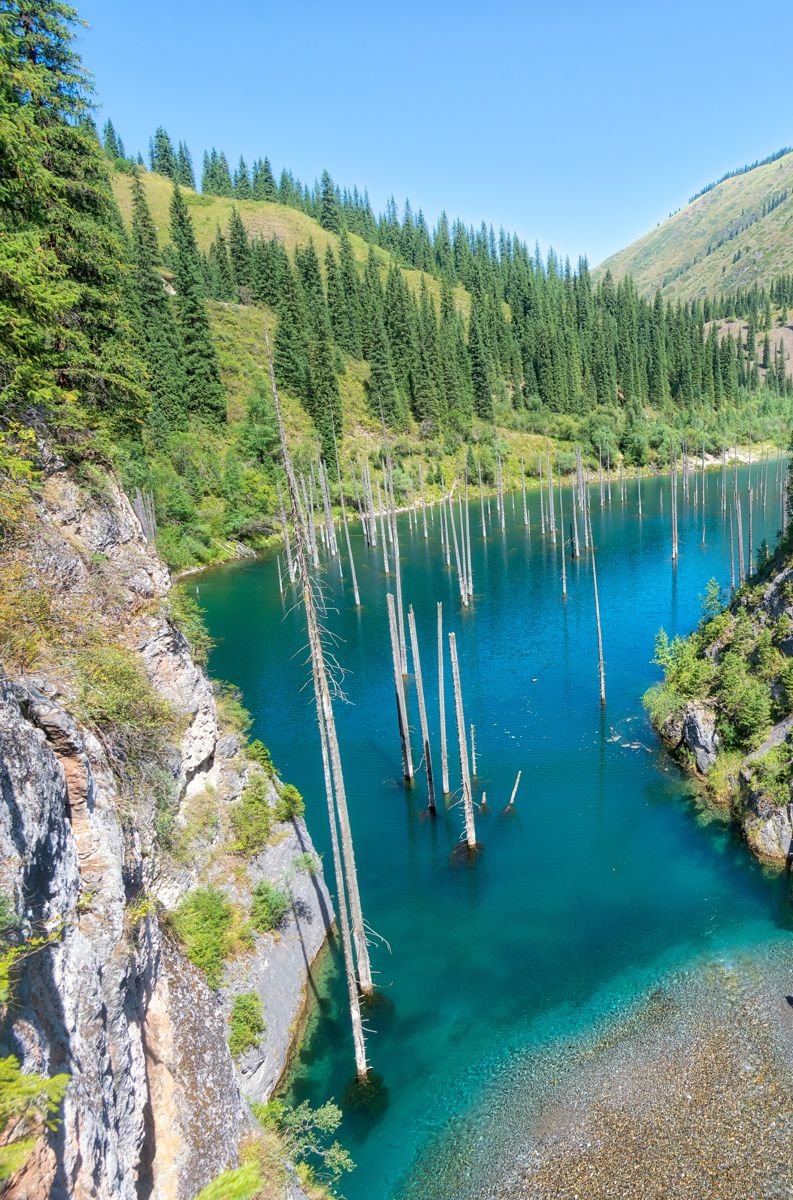
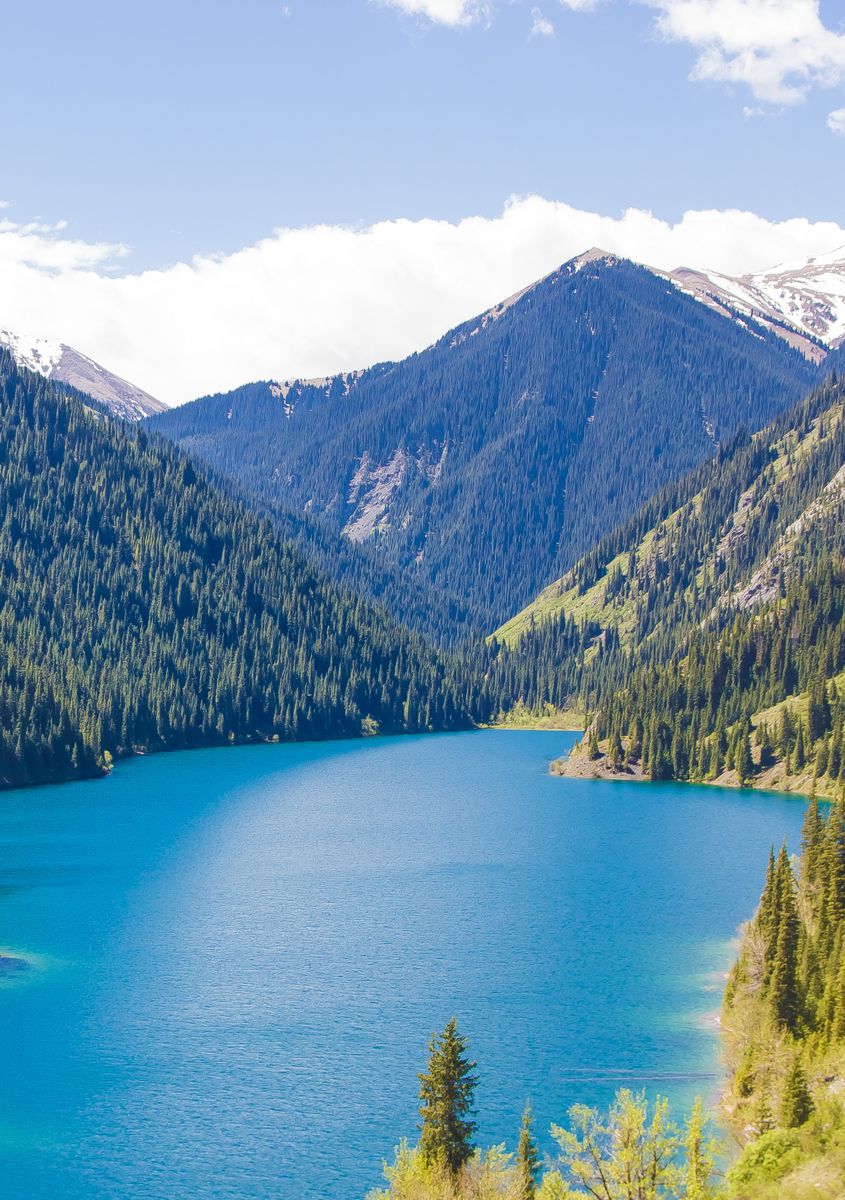
Kolsay Lakes
The Kolsai Lakes are a system of three lakes, nestled among the hills of the Northern Tien Shan Mountains, approximately 300km east of Almaty. They are also called “The Pearl of the Northern Tien Shan” and after visiting the lakes, we totally get why! The 3 lakes are so clear that, when the sun is out, the surrounding forests, hills and snowy mountain peaks are mirrored in the water. Kolsai 1 and Kolsai 2, are surrounded by spruce trees, alpine meadows and mountain pastures.
